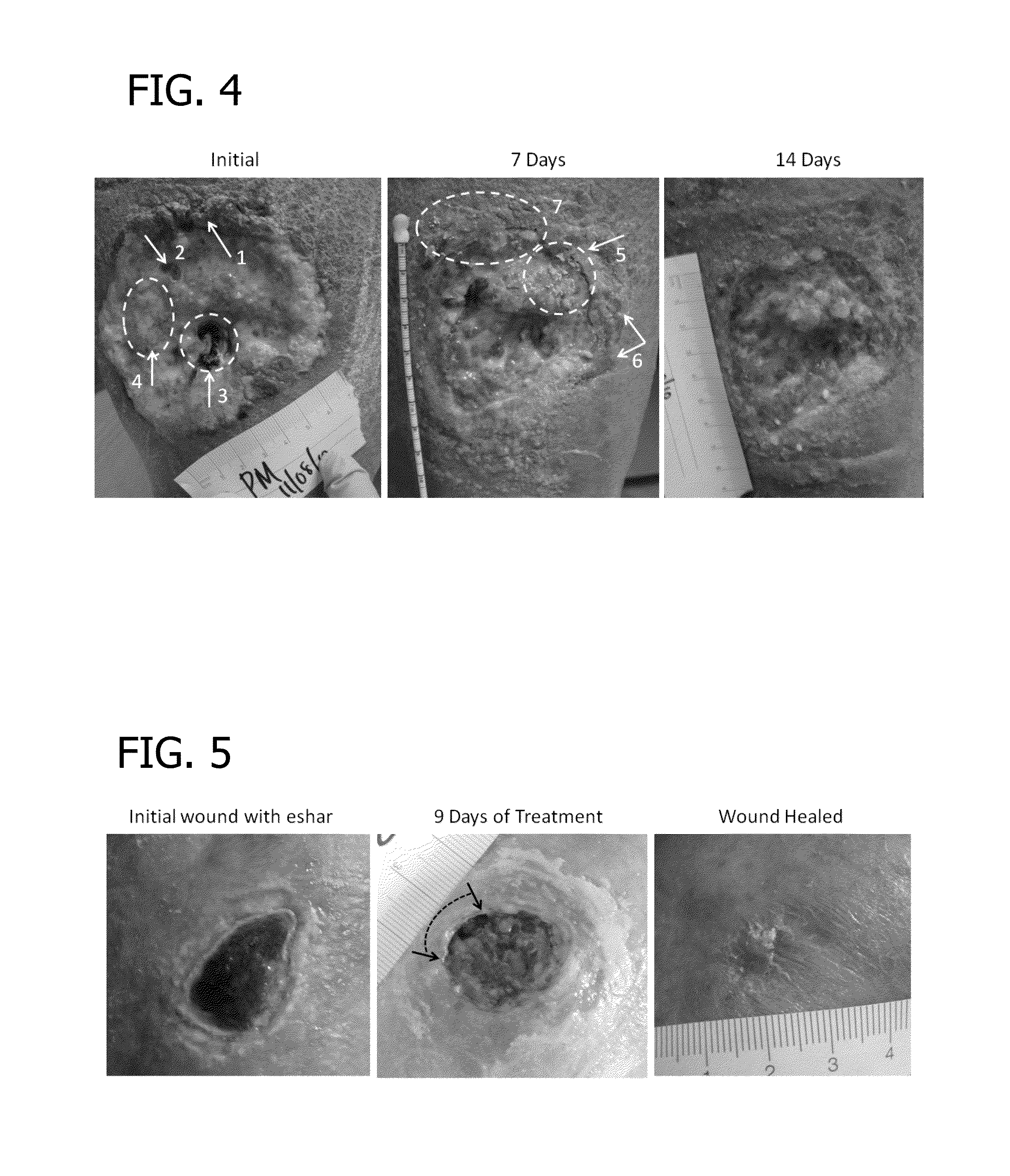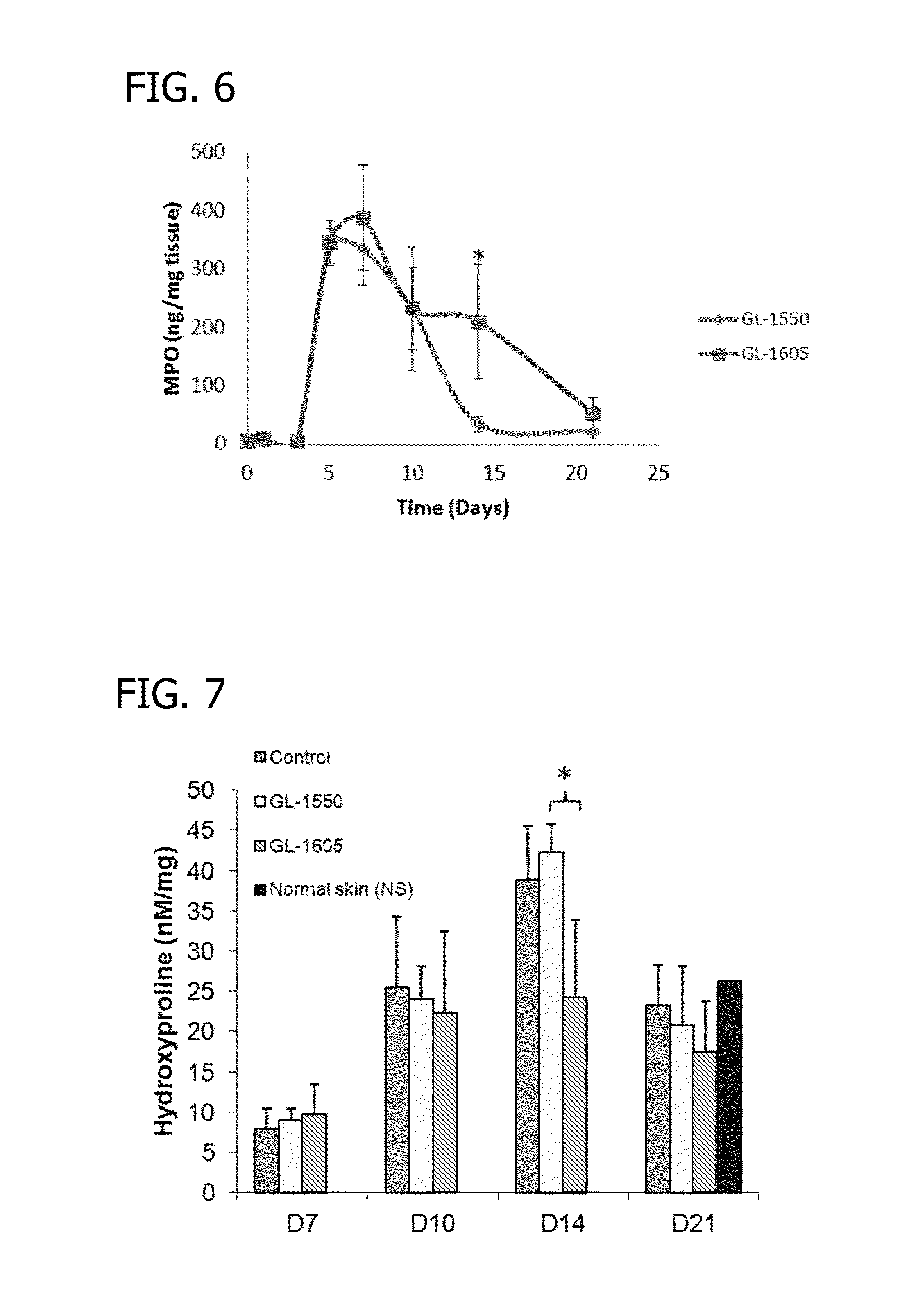Wound debridement
a wound and wound technology, applied in the field of wound debridement, can solve the problems of infection risk, high cost of surgery, and traumatic trauma, and achieve the effect of avoiding infection and reducing the risk of infection
- Summary
- Abstract
- Description
- Claims
- Application Information
AI Technical Summary
Problems solved by technology
Method used
Image
Examples
example 1
[0070]The dressing comprising a compressible body of loose glass-based fibers of FIG. 1 was prepared from glass of composition 53 wt % B2O3, 20 wt % CaO, 12 wt % K2O, 6 wt % Na2O, 5 wt % MgO, 4 wt % P2O5. As shown in FIG. 2, there were some residual beads (microspheres) of that are formed as part of the process for forming fibers. The diameter of the fibers ranged from of about 300 nm to about 2000 nm, as shown in FIG. 3. The microspheres were much larger in diameter and ranged from approximately 20 microns to about 300 microns as shown in FIG. 2.
example 2
[0071]A non-healing wound as shown in FIG. 4 containing a hard, non-viable crust treated in accordance with the invention. The dressing used comprised biocompatible fibers and beads having a composition of 51.6 wt % B2O3, 20 wt % CaO, 12 wt % K2O, 5 wt % MgO, 6 wt % Na2O, 4 wt % P2O5, 0.4 wt % CuO, and 1.0 wt % ZnO of composition 1605 in Table 1. The fibers were on the order of 500 nm to 5 microns in diameters. In addition to the fibers, the dressing contained about 80-90 wt % of particles (beads) having generally spherical shape. The particles had the same borate-based composition as the fibers.
[0072]The dressing was wet with sterile saline and applied against the wound and retained against the wound by a stardard cotton support dressing and wrapped with a compression dressing. The dressing was removed after three to four days, and a new dressing was applied. This removal and application of a new dressing was repeated twice weekly. At each dressing change, the wound was irrigated w...
example 3
[0076]A non-healing wound as shown in FIG. 5 containing a hard black eschar cap was treated in accordance with the Example 2. As can be seen from the figures, the initial wound had a large black eschar cap of the type typically requiring surgical debridement.
[0077]After 9 days of this treatment, the eschar was partially dissolved at the edges, and was easily removed with forceps. The removal of the eschar revealed undermining present (arrows) which shows the wound was actually bigger than the topical cover. Once the cover was removed, the wound was able to heal naturally, first filling in the undermined areas, and then epithelializing across the top of the wound. The image on the right shows the fully healed after debridement with the bioactive glass dressing.
PUM
 Login to View More
Login to View More Abstract
Description
Claims
Application Information
 Login to View More
Login to View More - Generate Ideas
- Intellectual Property
- Life Sciences
- Materials
- Tech Scout
- Unparalleled Data Quality
- Higher Quality Content
- 60% Fewer Hallucinations
Browse by: Latest US Patents, China's latest patents, Technical Efficacy Thesaurus, Application Domain, Technology Topic, Popular Technical Reports.
© 2025 PatSnap. All rights reserved.Legal|Privacy policy|Modern Slavery Act Transparency Statement|Sitemap|About US| Contact US: help@patsnap.com



